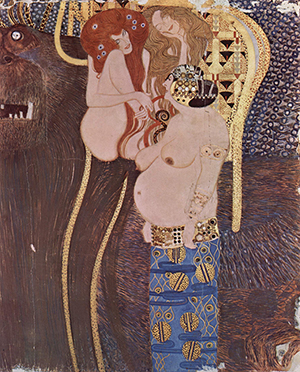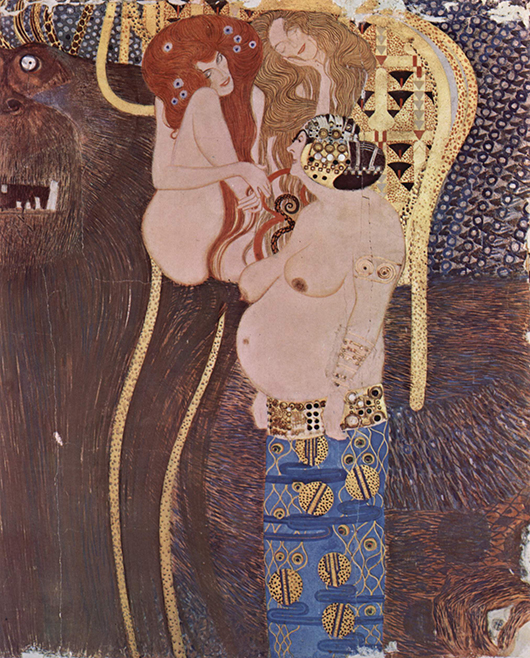
The family’s lawyer Marc Weber told the Austria Press Agency Wednesday that the heirs of Erich Lederer, the previous owner, had filed a restitution request with the Austrian culture ministry.
The ministry confirmed to AFP that it had received the claim.
A famed example of Jugendstil art, the 34-meter-long (112-foot) and two-meter-high Beethoven Frieze — or fresco — is one of Vienna’s tourism highlights.
Lederer’s heirs however allege that the Austrian state forced Lederer to sell the artwork in 1973, in return for being allowed to export other works that had been seized by the Nazis but returned to him after the war, according to the New York Times.
The frieze, which depicts man’s path to happiness using allegoric figures, was sold for $750,000 (554,400 euros) at the time, or half its estimated value according to auction house Christie’s, the newspaper reported.
Changes in Austria’s restitution legislation in 2009 have made it possible however for the heirs to now claim back the masterpiece, Weber argued.
“Under the current legislation, it is possible to return artworks that were sold to the state under procedures linked to the export ban,” he told the APA.
“Austria can now finally put an end to a continuing injustice after three quarters of a century,” he added.
How long the restitution procedure could take is still unclear.
The 1902 Beethoven Frieze — so called as it was inspired by the German composer’s Ninth Symphony — is seen as one of the masterpieces by the celebrated Austrian artist Klimt, perhaps best known for his painting “The Kiss.”
Thoroughly renovated from 1974 to 1985, the fresco takes up an entire room at the Secession art gallery. Conceived as a temporary work however, much of it has been lost.
In 2006, another famed Klimt artwork — the “Portrait of Adele Bloch-Bauer” — had been at the center of an Austrian restitution battle. It was eventually returned to the heirs of the previous owner.
# # #
ADDITIONAL IMAGE OF NOTE



